A study on the rule of Chinese medicine use against influenza virus based on data mining
Yu-Qiang Lu, Lin FU, Yu-Qi Hao, Hui Ding, Zhao-Lin Shi, Ru-Ying Li, Guo-Cheng Zhang*
1Shaanxi University of Chinese Medicine, Xianyang 712046, China; 2The Second Affiliated Hospital of Shaanxi University of Chinese Medicine, Xianyang 712046, China.
Background: To summarize the rules of the use of traditional Chinese medicine against influenza virus in the high-quality literatures of core journals, and to provide guidance for the prevention and treatment of influenza.Methods: Excel 2010 and ancient and modern medical case cloud platform (2.5V) were used to summarize the categories, nature, flavour and channel tropism of drugs.The cluster analysis of high-frequency drugs was carried out by SPSS 22.0, and the association rules of high-frequency drugs were analyzed by Apriori algorithm provided by SPSS modeler 18.0.Results: One thousand one hundred and thirty-one articles from core journals were retrieved and 135 articles were screened out, including 109 prescriptions and 170 drugs, with a total frequency of 1,655 times.The 3 most frequently appeared herbs were Gancao (Glycyrrhizae radix et rhizoma), Jinyinhua(Lonicerae japonicae flos) and Lianqiao (Forsythiae fructus).The top 3 efficacy were “Heat-Clearing (remove heat from the body surface and inside)” drugs, drugs for “Relieving Exterior Disorder (treat fever, chills and headaches caused by pathogenic substances in the air)”, and “Phlegm Relieving Cough Antiasthmatic Medicine (relieves respiratory cough and sputum symptoms)” drugs.The top 3 nature of drugs were cold, warm and flat.The top 3 flavour of drugs were bitter, spicy and sweet.The top 5 channel tropism of drugs were “Lung”, “Stomach”, “Heart”,“Spleen”, “Liver”.Association rule yields 20 drug pairs, Jingjie (Schizonepetae herba), Forsythiae fructus,Lonicerae japonicae flos, Niubangzi (Arctii fructus), Mahuang (Ephedrae herba) and Glycyrrhizae radix et rhizoma were commonly used concerted application; four new methods were obtained by cluster analysis.Conclusion: The use of traditional Chinese medicine against influenza virus has a certain regularity, which provides an important reference value for the prevention and treatment of influenza.
Key words: Traditional Chinese medicine, The flu, Medication rule, Data mining
Background
In 2020, coronavirus disease 2019 (Covid-19)spreaded around the world, and it was expected that the new coronavirus epidemic would continue to exist in 2021.It might lead to the risk of superimposed transmission with influenza (flu), which brought new challenges to the prevention and control of the new pandemic.Therefore, we should strengthen the attention to the prevention and control of flu.Influenza is a common respiratory infectious disease that is getting more and more attention.It has the characteristics of seasonal epidemic and fast transmission and spreads easily in closed environments, such as classrooms and nursing homes,the elderly, pregnant women, children, weak persons are at high risk of infection.Every year, as many as 0.29-0.65 million patients die and 3-5 million patients develop severe illness [1], causing immeasurable losses to the lives and property of patients and social medical and health resources.
Getting a flu shot is still the best way to prevent it.But the flu virus is easy to mutate, and the vaccine antibody action has the time limit, which brings more and more difficulties to the prevention work.Modern anti-flu drugs are mainly divided into neuraminidase inhibitors (such as oseltamivir) and M ion channel inhibitors (such as amantadine).However the use of these 2 types of drugs is facing increasing restrictions due to different degrees of drug resistance and toxic side effects [2-3].There is no “flu” in the ancient Chinese medical classics, but it belongs to the categories of “common cold”, “plague” and “mild disease”.In thousands of years of practice, traditional Chinese medicine (TCM) has accumulated and innovated rich clinical experience and theories on anti-flu.This paper, through searching high-quality literatures of core journals, conducts data mining and sorting on TCM anti-flu viruses, and summarizes the rules of the use of TCM anti-flu viruses, so as to provide reference for TCM prevention and treatment of flu.
Materials and methods
Literature retrieval
With the subject words “TCM”, “Chinese patent medicine”, “herbal medicine”, “flu virus”, “flu”, “flu”,“grippe” and “clinical observation”, the related literature of CNKI, VIP and Wanfang Data were retrieved from the built of database to December 31,2020.
Inclusion criteria for literature
(1) Journal articles with clear diagnosis of flu.(2) The literatures belong to Clinical type.(3) They have specific prescriptions and drugs.(4) They are from core journals.
Exclusion criteria for literature
(1) Journal articles are non-clinical, such as animal experiments.(2) They belong to review.(3) They have no specific prescriptions and drugs.(4) The same studies have been published repeatedly and the different studies with the same prescription should be included only once with the latest publication year.
Data entry and standardization
Microsoft Excel 2010 and ancient and modern medical case cloud platform were used to extract the key information of the included literature, such as prescription medication, the categories, nature, flavour and channel tropism of drugs.According to the 2020 edition of “Pharmacopoeia of the People's Republic of China” [4] and the latest version of the “Science of Chinese Materia Medica” [5], the names of collected TCMs need to be standardized, such as Shenghuangqi(Astragali radix) was unified as Huangqi (Astragaliradix), Dangguiwei (Angelica tail) was changed to Danggui (Angelicae sinensis radix).
Statistical analysis
(1) The data that had been input into Excel 2010 was imported into the software ancient and modern medical case cloud platform (AAMMCCP, 2.5V) in bulk for frequency statistics; (2) Chinese medicine with frequency ≥ 20 times was selected for association rule analysis, and 20 associated drug pairs were obtained through SPSS modeler 18.0.(3) Cluster analysis: the system cluster analysis method in SPSS 22.0 was used.
Results
Literature retrieval results
In this study, a total of 1, 131 related literatures were retrieved.According to the inclusion and exclusion criteria of literature, the title and abstract were read for initial screening, and the remaining was downloaded and read for rescreening.Finally, 135 literatures and 109 prescriptions were included.
Frequency of drugs
The drugs from the above prescriptions were introduced into ancient and modern medical case cloud platform (2.5V).One hundred and seventy flavour drugs were counted, which were used 1, 665 times in total.There were 24 drugs, which were used more than 20 times , accounting for 14.11% of the 170 flavour drugs, and the total frequency of the 24 drugs was 1,127 times, accounting for 68.1% of the total frequency of 170 medicines.The top 5 Chinese medicine were Gancao (Glycyrrhizae radix et rhizoma), Jinyinhua(Lonicerae japonicae flos), Lianqiao (Forsythiae fructus), Huangqin (Scutellariae radix), Kuxingren(Armeniacae semen amarum).The percentage was 7.25%, 6.22%, 5.86%, 4.59% and 3.99%, respectively.Details of the top 24 drugs were listed in Table 1.

Table 1 Top 24 Chinese medicines for the treatment of flu
High frequency drug efficacy
24 drugs that were used more than 20 times were considered high-frequency drugs.Their effects were as follows.The efficacy frequency of 170 TCMs was 4,919.The highest frequency was heat-clearing drugs(523 times, 10.64%), followed by drugs for relieving exterior disorder (275 times, 5.55%) and phlegm relieving cough antiasthmaticmedicine (144 times,2.93%) (Table 2).
Nature of high-frequency drugs
In order to facilitate the analysis, when recording the nature, the “great cold” and “slight cold” ones should be uniformly recorded as “cold”.The results showed that the nature of the 24 TCMs were mainly cold,warm and flat, and the medicinal frequency of 170 TCMs was 1, 507.The nature of cold was the highest(678 times, 44.99%), followed by warm (200 times,13.27%), flat (177times, 11.75%) (Table 3).
The flavour of high frequency drugs
When recording the flavour, the “slight acid” ones should be classified as “acid” for statistics.Among the 24 TCMs, the main ingredients were bitter, pungent and sweet.The flavour frequency of 170 TCMs was 2,155.The occurrence frequency of bitter was 11 times,which was the highest, followed by pungent (10 times)and sweet (6 times) (Table 4).
The channel tropism of high frequency drugs
The top 5 were “Lung Channel” (993 times), “Stomach Channel” (452 times), “Heart Channel” (441 times),“Spleen Channel” (305 times), “Liver Channel” (238 times).In particular, there was no “Sanjiao” (triple energizer) channel in the 24 high frequency drugs.Details of the 12 channels were listed in Table 5.
Association rule of high frequency drugs
The high-frequency drugs with frequency ≥ 20 were imported into SPSS Modeler18.0 software data source,selected “options” field in the “category”, the“measurement” was set to “tag”, “character” was set to“any”, chose “modeling-link-apriori” to analyse association rule, the minimum support was set to 13%,the biggest confidence live a miserable life was 83%,the largest number referred to in the preceding paragraph was kept for 1, 20 drug pairs were obtained.According to the degree of confidence percentage ranking,Schizonepetae herba,Forsythiae fructus,Lonicerae japonicae flos,Arctii fructus,Ephedrae herbaandGlycyrrhizae radix et rhizomawere commonly used concerted application (Table 6).Figure 1 shows the networked display of drugs with frequency≥ 20 times.The thicker and darker the line segment,the stronger the association.It can be found from Figure 1 thatGlycyrrhizae radix et rhizoma,Arctii fructus,Lonicerae japonicae flos,Forsythiae fructus,Menthae haplocalycis herbaandScutellariae radixare closely related.
Clustering analysis of high frequency drugs
Microsoft Excel 2010 was used to establish 24 drugs with frequency ≥ 20.Drugs appearing in various literature were counted as “1” and drugs not appearing as “0”.Then, the 24 drugs were imported into SPSS 22.0 software.“Systematic Clustering” was adopted for classification, and the cluster analysis diagram was obtained.Four clusters could be divided by the dotted line at “20” of the abscissa in the diagram, as shown in Figure 2 and Table 7.
Discuss
The analysis of high frequency drug
The top 3 anti-flu drugs wereGlycyrrhizae radix et rhizoma(120 times),Lonicerae japonicae flos(103 times) andForsythiae fructus(97 times).Glycyrrhizaeradix et rhizomais “Qi” medicine with clearing away heat and toxic materials and other effects.The drug’s nature is flat and sweet flavour.The channels tropism of drug are “Heart”, “Lung”, “Spleen”, “Stomach”.Modern pharmacological studies have shown that glycyrrhizin has immunomodulatory and anti-inflammatory effects, can control the expression of pro-inflammatory genes induced by flu virus, reduce the influence of pro-inflammatory response and flu virus-induced apoptosis of monocytes, and thus reduce the replication ability of flu virus [6].Lonicerae japonicae flosis an antidote to heat and has been used to treat flu for thousands of years, its nature is cold,and flavour is sweet.The channels tropism of drug are“Lung”, “Stomach”, “Heart”.Studies have found that honeysuckle acid, flavonoid extract, and acid-flavonoid mixture can inhibit flu virus.Acid extract also showed obvious antiviral activity in the body, can effectively alleviate the symptoms of viral pneumonia in mice, to maintain the weight, improve the survival rate, in particular, the drug works well when the flu virus is resistant to the neuraminidine inhibitor [7].Forsythiae fructusis cold, bitter, and has the functions of “Clearing Heat (with cold and cool medicine to clear body’s heat)”and “Detoxifying, Relieving Surface Heat” and so on.It has a good effect on the symptoms of wind-heat, the onset of epidemic febrile disease, and the entry of fever into blood circulation.Some researchers have found thatForsythiasus-pensa extract has antibacterial and antiviral effects, and can also inhibit vomiting and protect liver injury [8].Studies have also shown thatForsythiasus-pensa extract is toxic to MDCK cells at a high concentration, while at a low concentration it has a protective effect on cells infected with flu virus,and may have a significant antiviral effect on acute respiratory diseases infected with flu virus [9].

Table 2 High frequency drug efficacy
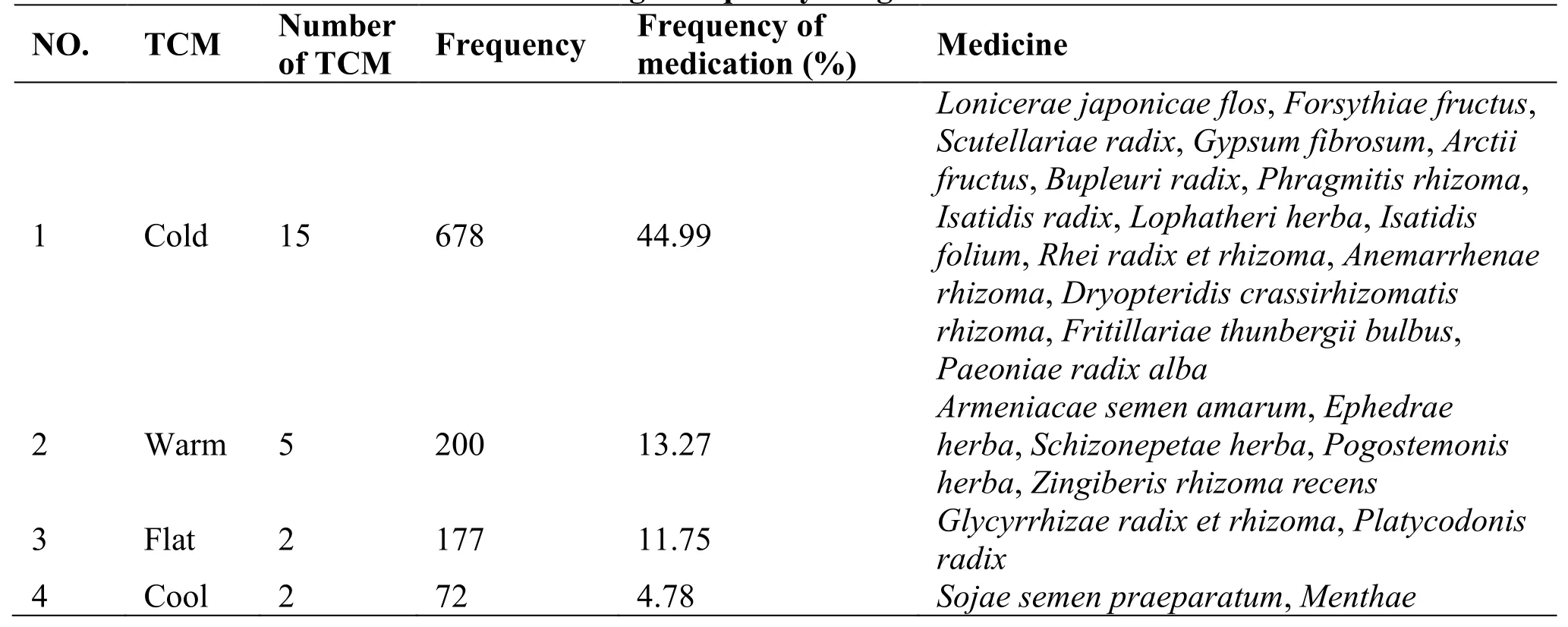
Table 3 Nature of high-frequency drugs in the treatment of flu
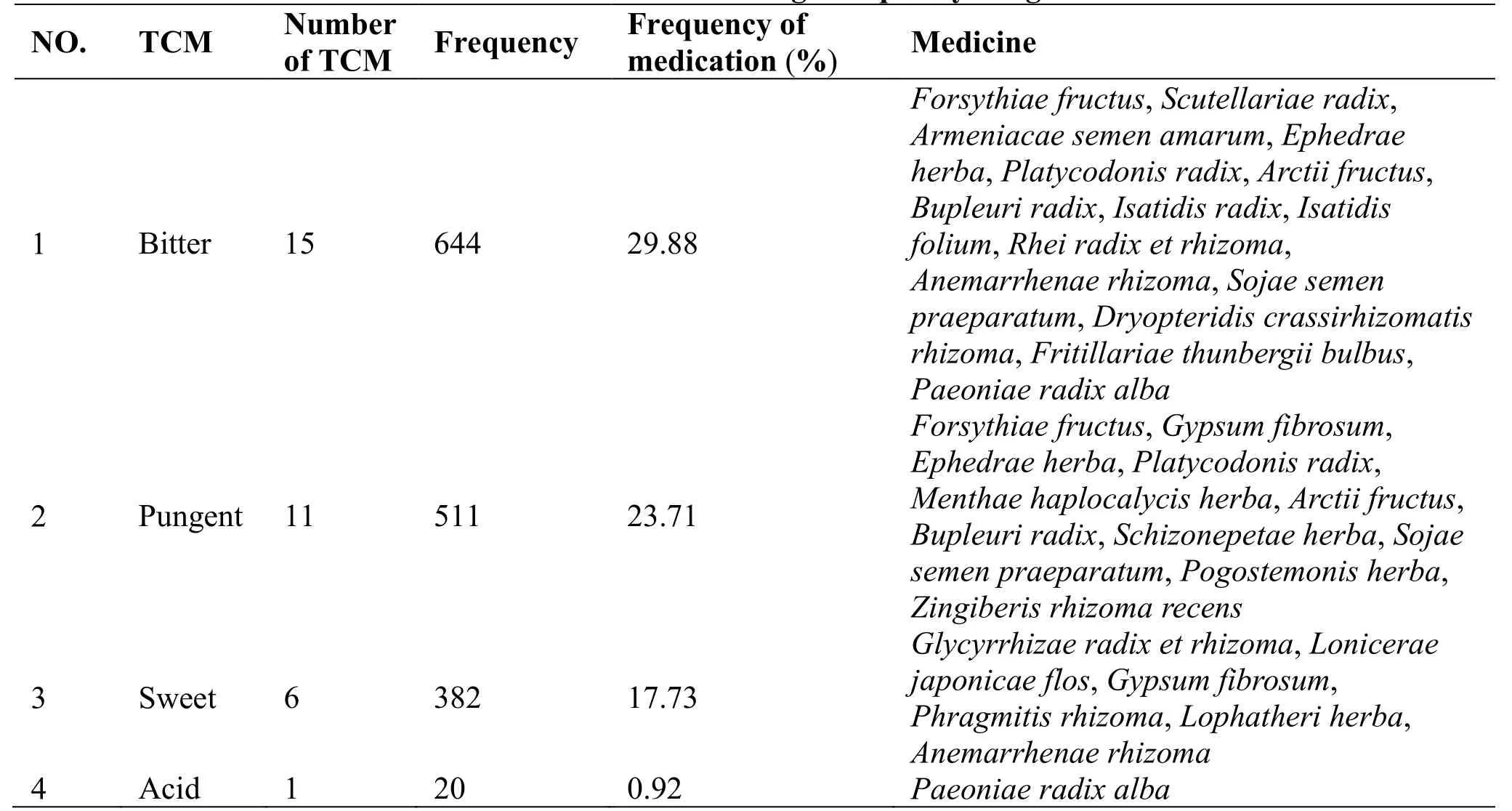
Table 4 The flavour of high frequency drugs
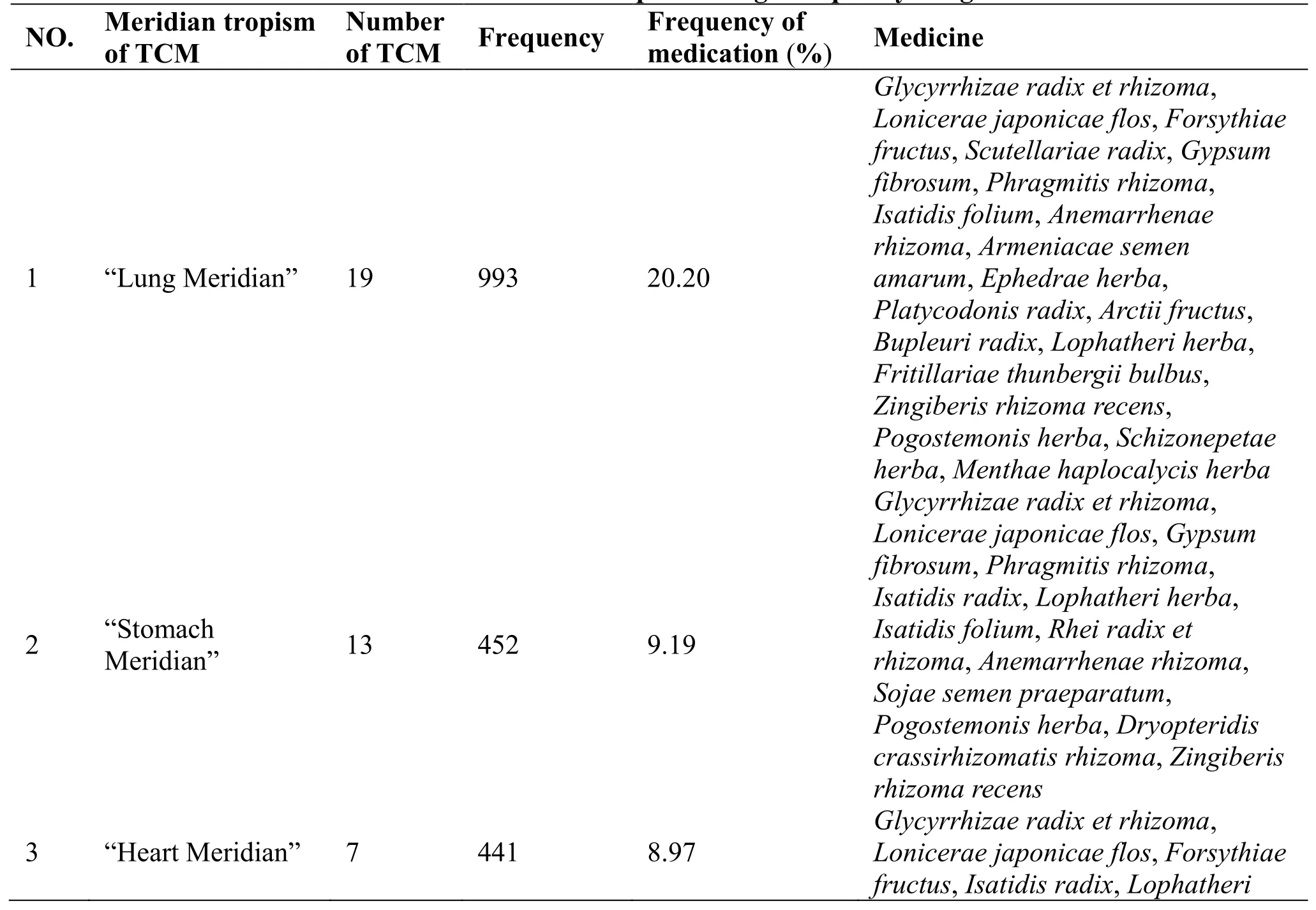
Table 5 The Meridian tropism of high frequency drugs
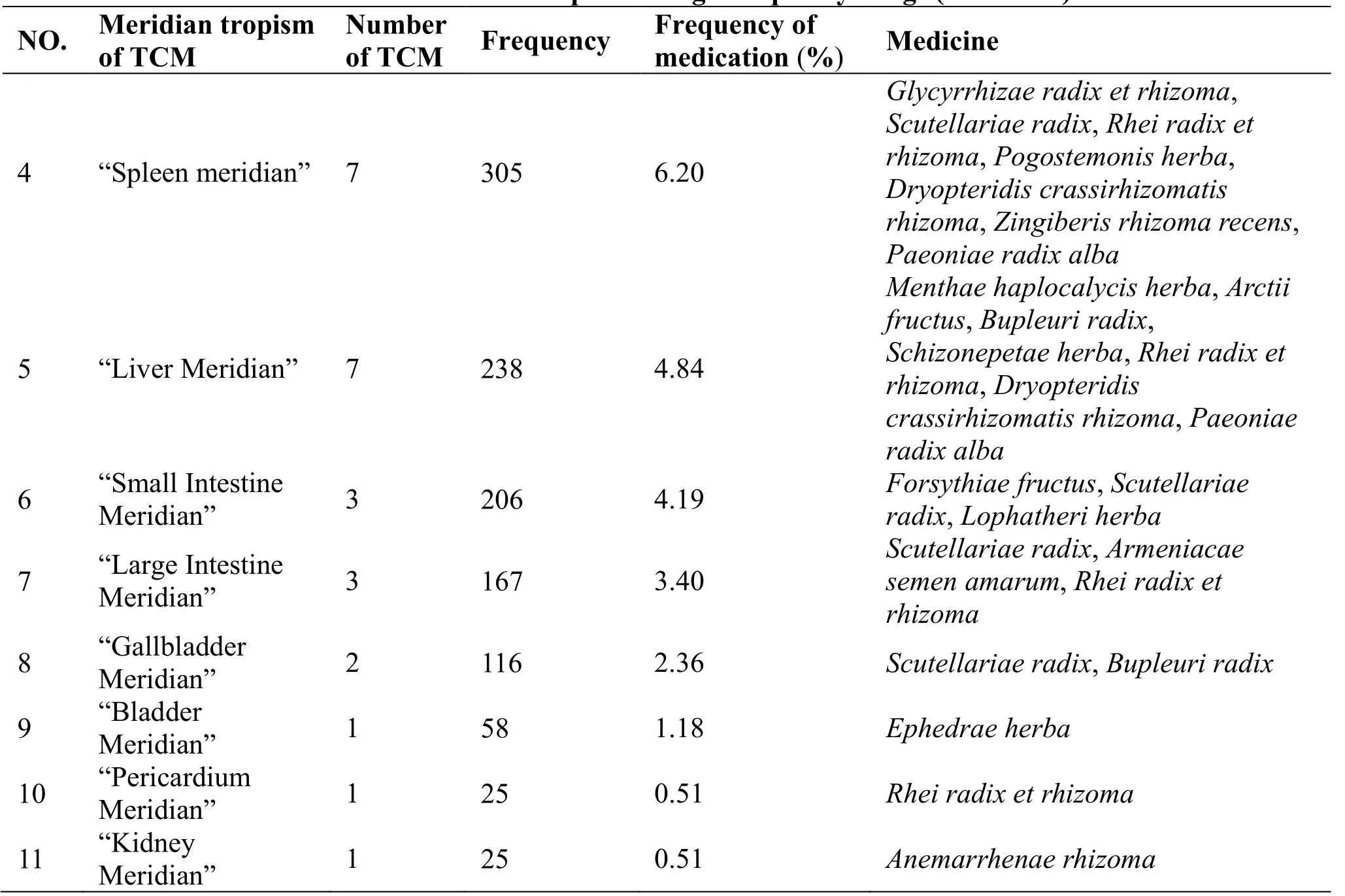
Table 5 The Meridian tropism of high frequency drugs (continued)
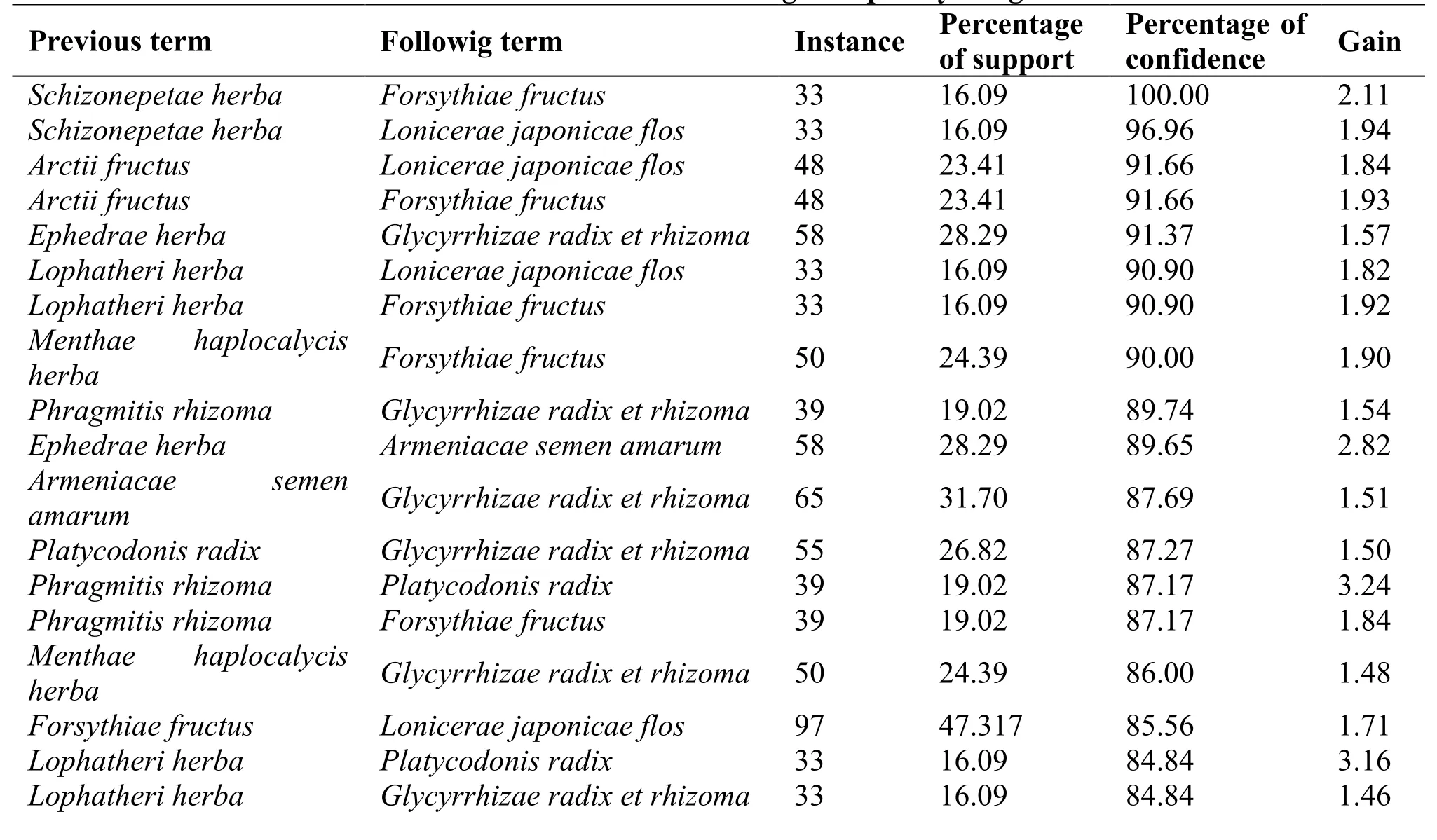
Table 6 Association rule of high frequency drugs

?

Figure 1 Association network diagram of high-frequency TCM in the treatment of flu.Flu,influenza.

Figure 2 Cluster analysis of high frequency TCM (frequency ≥ 20) in the treatment of flu.TCM, traditional Chinese medicine; flu, influenza.
The analysis of nature with high-frequency drugs
The top 4 nature with high-frequency drugs were cold > warm > flat > cool.The syndrome differentiation of flu varies in TCM.Referring to famous experts [10-11], the syndrome differentiation mainly divides into the syndrome types of wind-cold invading the lung, wind-heat invading the lung, and poisonous heat closing the lung.Cool diseases are treated with medicine for heat.Ephedrae herbaandCinnamomi ramulusare used for wind-coldness type, s disease (such as the incipient cold), at the same time,Glycyrrhizae radix et rhizomais used to limit the perspiration ofEphedrae herbaandCinnamomi ramulus.Heat diseases are treated with medicine for cool, therefore, wind-heat type and toxic heat close lung type use cool drugs such asLonicerae japonicae flosandForsythiae fructus.
The analysis of flavours with high frequency drugs
Among drugs with frequency ≥ 20 times, bitter flavours (644 times), pungent flavours (511 times) and sweet flavours (382 times) were found.Bitter flavours has the function of “Releasing, Dryness and Dampness, and Strengthening Yin (reduce toxins in the body, remove excessive water from the body and nourish Yin)”.It can mainly treat the syndrome of exogenous fever, dampness and heat and injure “Yin”.Pungent flavours has the effect of dispersing “Qi” and blood, diverging into “Yang” with sweet flavour.It can treat flu, which “Weiyang” is not solid (Yang is not enough) and the body surface is cold.The sweet flavour has the effect of “Tonifying Deficiency”,mediating and slowing down.It can be used to treat the flu when the body is weak.
The analysis of channel tropism with high frequency drugs
In the top 5 of the 12 meridians, lung meridians appear 993 times frequently.The lungs are the main “Qi”, the department of respiration, and communicate with the outside world.The lungs are also charming and dirty,warm and evil, and they are the first to invade the lungs.The frequency of “Stomach Meridian” and“Spleen Meridian” was 452 times and 305 times respectively.The “Spleen” and “Stomach” were the acquired origin, and a dose of “Stomach Qi” would have a vitality.For people with severe flu symptoms,the medicine of “Spleen” and “Stomach Meridian” was particularly important.Heart for 441 times, the monarch of the heart, for the main viscera, in liquid sweat, cold and fever caused by the loss of body fluid injury and heart, heart drugs can protect the heart of the blood.The “Liver Meridian” is 238 times, the“Liver” main catharsis, regulating the whole body“Qi”, can enhance the effect of pungent divergence“Qi”.
Association rule analysis of high-frequency drugs
Choose a frequency of 20 times or more Chinese medicine association analysis, the medicine is good for compatibility, confidence level the highest percentage of medicine forSchizonepetae herba-Forsythiae fructus, followed bySchizonepetae herba-Lonicerae japonicae flos,Arctii fructus-Lonicerae japonicae flos,Arctii fructus-Forsythiae fructus,Ephedrae herba-Glycyrrhizae radix et rhizomaetc.The above 5 groups are mostly used to “Clear Heat and Detoxify(anti-inflammatory)”, “Expend Wind and Dissipate Heat, Relieve Surface and Disperse Cold (remove cold and heat from the body surface)”, and “Clear Lung And Relieve Cough (relieves respiratory cough and sputum symptoms)”, which have similar efficacy with the first 3 types of 109 TCM prescriptions.According to drug test, flu syndrome types mainly include 3 syndrome types: “Wind-Cold Attacking the Lung (the early stages of a cold)”, “Wind-Heat Attacking the Lung (the aggravation of a cold)” and “Toxic Heat Closing the Lung (the critical period of a cold)”, which is consistent with the syndrome differentiation of famous scholars [10-11].
Clustering results and new method analysis
Four new prescriptions had been developed, the compositions of C1 areSchizonepetae herba,Sojae semen praeparatum,Lophatheri herba,Arctii fructus,Platycodonis radix,Phragmitis rhizoma,Lonicerae japonicae flos,Forsythiae fructus,Menthae haplocalycis herba.Flu is “Epidemic Febrile Disease”,which damages the lungs firstly.The lung is opened in the nose, and the throat is the gateway to the lungs, so symptoms such as sore throat, nasal congestion and runny nose appear.Menthae haplocalycis herbaandArctii fructusare pungent and cool, which can detoxify and benefit the throat.At the beginning of the attack of exogenous evil, the fur is closely related to the lung.“Yang” rises to resist and gets fever.Lonicerae japonicae flosandForsythiae fructusare cool through the surface to “Clear Heat and Detoxify”.Respiration is one of the necessary conditions for human survival.Lung and respiration are closely related.If lung function is abnormal, symptoms such as cough and expectoration will appear.Glycyrrhizae radix et rhizomacan resolve phlegm to stop;Phragmitis rhizomaandLophatheri herbaare sweet flavour,which can generate fluid to relieve thirst.The study found that the cure rate and total effective rate ofIsatidis radixalone for flu were 62.5% and 77.5%,respectively, while the cure rate and total effective rate of classic ancient prescription Yinqiaosan powder (a famous Chinese medicine prescription for treating exogenous diseases) were increased by 18.75%, and the symptom disappearance time was less than that ofIsatidis radixalone in the control group (P< 0.05)[12].C2 compositions:Scutellariae radix,Bupleuri radix,Isatidis radix;Scutellariae radixis discharged by clear fire, andBupleuri radixcan promote Yang,mainly treating “Shaoyang Disease (symptoms include bitter mouth, dry throat and dizziness)”.However, one syndrome is not recognized, so it can mainly treat the diseases such as cold and heat, dizziness and headache caused by the pathogenic factors into “Shaoyang”,Isatidis foliumhas unique advantages in resisting flu,and it is also in line with the modern pharmacological research on Daqing leaf resisting flu [13].C3 components:Isatidis radix,Dryopteridis crassirhizomatis rhizoma,Pogostemonis herba,Rhei radix et rhizoma,Anemarrhenae rhizoma,Fritillariae thunbergii bulbus,Ephedrae herba,Armeniacae semen amarum,Gypsum fibrosum,Glycyrrhizae radix et rhizoma.The main symptom is the unsolved cold evil,and the evil into the syndrome of heat and dampness,showing the symptoms of lung heat, cough and asthma, thirst and not wanting to drink.Isatidis radix,Dryopteridis crassirhizomatis rhizomaandRhei radix et rhizomacan “Clear Heat and Detoxify”, combined withPogostemonis herbato “Relieve Dampness Qi”,which is in line with the characteristics of virus epidemic treatment [14].When people catch a cold,they get fever, which reduces fluid and causes thirst,because the lungs are closely related to the large intestine, and sometimes constipation occurs,Fritillariae thunbergii bulbusandAnemarrhenae rhizomacompatibility can “Nourish Yin”,Gypsum fibrosumcan clear heat and generate fluid to relieve thirst; the combination ofEphedrae herba,Armeniacae semen amarum,Gypsum fibrosum,Glycyrrhizae radix et rhizoma, which can cure influenza.In C4,Zingiberis rhizoma recensis used to dispelling coldness to relieve pain andPaeoniae radix albais used to protect blood and protect body.The combination of ginger polysulfonic acid polysaccharide is used to treat cold when surface deficiency occurs.The experiment showed that mixed polysaccharides can improve the inhibitory effect of flu virus and reduce lung inflammation by activating humoral immunity and cellular immunity [15].
Defect and improvement
Modern medicine has made great progress in the treatment of flu, and flu is generally treated with western medicine.At present, the number of cases of flu treated with TCM alone is still insufficient, and many studies are carried out by combining western drugs such as oseltamivir with TCM to improve symptoms.Flu viruses are variable, and it is possible that the literature collected is older and the drugs used are less effective now.The use of pesticides, fertilizers,etc., can also make drugs less effective, and the dose of flu drugs may need to be increased.TCM for the treatment of flu still has many aspects to be further explored, such as drug dosage.
Conclusion
Through the 3 database retrieval, screening line,standard of core periodical literature, fight the flu virus medicine use frequency, efficacy, 4 gas mixed, belong to the distribution, association rules and clustering analysis for the finishing excavation, the recessive knowledge rule against flu virus by digital display, it is concluded that flu virus new prescription medication rule and Chinese medicine, prevention flu provides an important reference value for TCM.
- Medical Data Mining的其它文章
- The research progress of acupuncture and moxibustion in the treatment of peripheral facial paralysis
- Based on data mining, the drug law of clinical treatment of chronic urticaria
- Somatic TP53 mutations and comparison of different TP53 functional domains in human cancers: data analysis from the IARC TP53 database and the National Cancer Institute GDC data portal
- Unsatisfied methodological qualities assessment of systematic reviews/Meta-analyses on Chinese medicine for stroke and their risk factors

